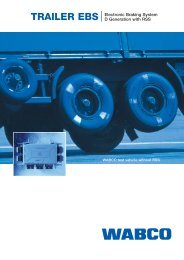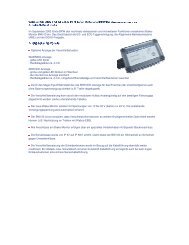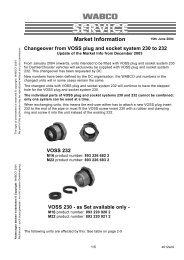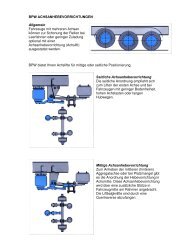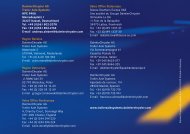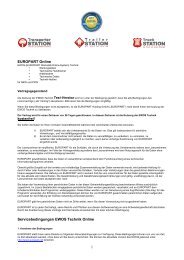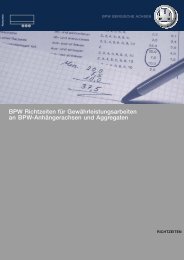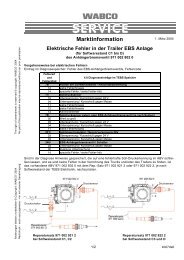Brosch. Trailer EBS (E) - wabco inform
Brosch. Trailer EBS (E) - wabco inform
Brosch. Trailer EBS (E) - wabco inform
You also want an ePaper? Increase the reach of your titles
YUMPU automatically turns print PDFs into web optimized ePapers that Google loves.
<strong>EBS</strong> 17<br />
Operation of <strong>Trailer</strong> <strong>EBS</strong><br />
Fig. 12: Load-Sensitive Braking of Semitrailers<br />
Fig. 13: Brake Force Distribution in Drawbar <strong>Trailer</strong>s<br />
ried. Irrespective of whether the vehicle is<br />
laden or not, the EC “laden” band<br />
is being complied with.<br />
On drawbar trailers, the brake force<br />
distribution achieved by means of software<br />
(fig. 13) renders the commonly used<br />
load-sensing valves, the adapter valve on<br />
the front axle and the pressure limiting<br />
valve on the rear axle, obsolete.<br />
Here the transmission function is divided<br />
into three ranges:<br />
■<br />
■<br />
contact range<br />
wearing range<br />
A<br />
V<br />
In the partial braking range, the pressures<br />
are output to optimize wear. On drawbar<br />
trailers with, for instance, type 24 brake<br />
chambers on the front axle and type 20<br />
brake chambers on the rear axle, pressure<br />
is reduced slightly on the front axle,<br />
in keeping with the design, and increased<br />
slightly on the rear axle. This, compared<br />
with the current adapter valve, achieves<br />
more accurate distribution of forces<br />
across all wheel brakes. Within the stability<br />
range, the pressures are output in<br />
keeping with even utilization of adhesion,<br />
as a function of the axle load.<br />
■<br />
stability range<br />
S



